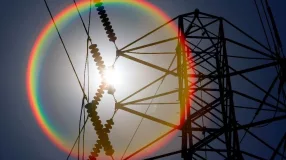Seven continents, five oceans, over 15 million square miles of forests and nearly nine million species of animals — these are the unique attributes that make up our Earth. It’s hard to celebrate our planet without thinking of its long-standing relationship with energy. When mankind first discovered fire thousands of years ago, little did they know they ignited the spark that would lead to countless energy discoveries. From the ancient use of water to grind corn, to the coal and steam power that drove the Industrial Revolution, to the oil boom of the 1900s, to today's increasing use of natural gas and renewable power to make electricity, each source has played a role in modernizing our world.
Of all the fossil energy sources available today, natural gas is the cleanest burning. It emits half as much carbon dioxide as coal and 30 percent less than oil, per unit of energy delivered. The increased use of natural gas, which is displacing coal in power generation, has helped reduce greenhouse gas emissions to the levels they were at in the mid-1990s. With the creation of the world’s first zero-emission power plant, the future could see greenhouse gas emissions reduce even further, thanks to natural gas.
Natural gas is not only cleaner, but it also works in tandem with other energy sources to optimize efficiency. In combined-gas plants, natural gas works with steam to produce up to 50 percent more electricity than a simple-cycle plant. In the renewables space, natural gas can function as a reliable backup to variable wind and solar sources. Additionally, natural gas often heats the furnaces that are used to create the fiberglass used on wind turbine propellers.
When you celebrate the beauty of our Earth today, think about how far we have come from the days of fire and wood. With further innovation, natural gas could play an even larger role in the future of our Earth!







